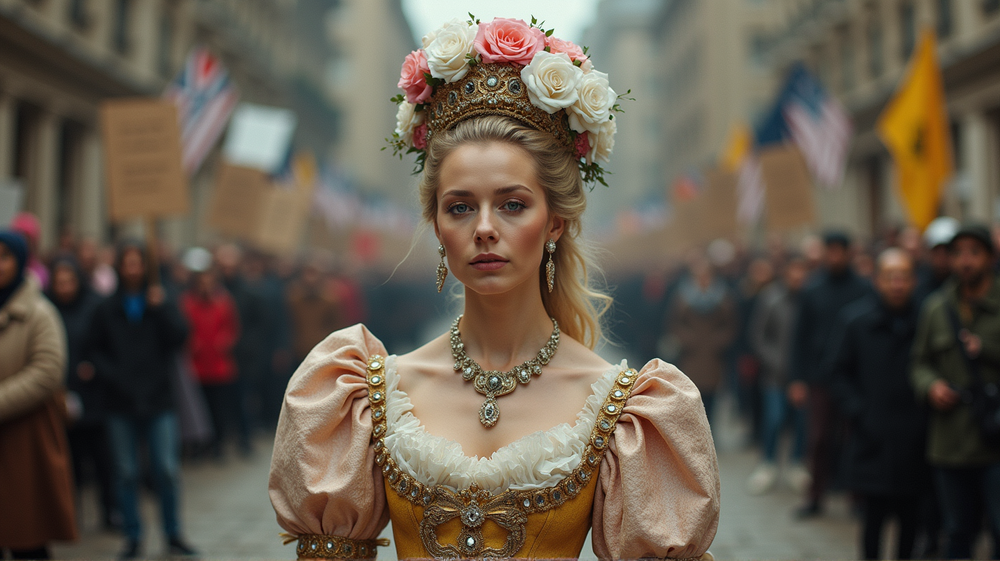Marie Antoinette’s bold, opulent style continues to inspire and incite discussions around wealth, privilege, and societal detachment. Just as “Marie Antoinette Style” opens at the Victoria & Albert Museum, protests echo across the world against political corruption and inequality.
Echoes of the Past
In the shadow of the “Marie Antoinette Style” exhibit at the Victoria & Albert Museum in London, the streets of Manila are charged with protest. Rallying cries harken back to revolutionary France where citizens demanded that their monarch, ensconced in opulence while the masses starved, face justice. The parallels are uncanny, reminding us how fashion, society, and politics are eternally intertwined. As the exhibit reminds visitors of Marie’s extravagant style, the scene outside reflects a similar discord over disparities in wealth.
The Story Behind Marie’s Style
Marie Antoinette’s entrance into the French court was strategic – rooted in fashion as a form of political maneuvering and self-expression. Her vibrant outfits not only fascinated onlookers but conveyed messages of power and resistance. From the outset, her style and persona were sculpted by her mother, Maria Theresa’s expectations, leading viewers to glimpse the layers of political narrative spanning through fabric and jewels.
A Symbol of Rebellion
The young queen defied traditional court apparel, opting for innovative silhouettes and embracing Parisian flair. Her collaborations with designer Rose Bertin marked the dawn of fashion as a conscious proclamation – chronicling shifts in personal and political identity. Despite the controversies that her choices spurred, her fashions captured imaginations and set trends that transcended her time.
Public Perception and Backlash
As France’s financial hardships intensified, Marie’s luxurious wardrobe and perceived indifference made her a scapegoat. Extravagant rumors proliferated, inflating her image as a symbol of decadence. Alongside, there lurked the seething resentments of a nation on the brink of revolutionary upheaval, accusing her of lavishness in the face of societal despair.
The Trianon’s Temporarily Eternal Escape
Retreating into the Petit Trianon, Marie sought solace from the public eye. Yet her private escapades in picturesque surroundings only deepened perceptions of her being disconnected and indifferent. Her attempts to reflect rural simplicity in style inadvertently starkened the divide between privilege and the proletariat.
History’s Grip on Image
Fashion’s evolving narrative ensures that Marie Antoinette’s influence pervades modern styling, from Empress Eugénie’s revival to contemporary culture embodied by icons like Madonna. Today, as protests against societal inequalities reverberate globally, themes echo those that sealed her destiny. According to Philstar Life, Marie Antoinette’s legacy as both a style icon and a misunderstood figure persists, provoking thought and debate centuries past her time.
The fashion that catalyzed her downfall paradoxically secured her immortality in the annals of history. This vivid tapestry of gowns, jewels, dissent, and discourse paints a dynamic portrait of how style inevitably reflects deeper societal undertones.













